Sigma Xi 2017 Student Research Showcase
Cell Biology & Biochemistry
 The Search for Alternative Cancer Treatments: The Effects of the Beta Blocker Propranolol and the Stress Hormone Norepinephrine in Normal and Cancerous Mouse Mammary Epithelial Cells
The Search for Alternative Cancer Treatments: The Effects of the Beta Blocker Propranolol and the Stress Hormone Norepinephrine in Normal and Cancerous Mouse Mammary Epithelial Cells
Chiamaka Okonkwo, North Carolina School for Science and Math
The beta-adrenergic pathway is believed to play a role in the inhibition of cancer cell communication and proliferation and in the promotion of cancer cell death. Previous clinical studies have found that cancer proliferation is inhibited through the use of beta blocker medications, while leaving noncancerous cell proliferation relatively unaffected. Therefore, this experiment explored the beta-adrenergic pathway through the study of cancerous and noncancerous mouse mammary epithelial cells in-vitro.
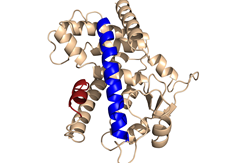 Sigma Xi Student Research Showcase: An introduction Into the Molecular Dynamics of the PPAR Protein
Sigma Xi Student Research Showcase: An introduction Into the Molecular Dynamics of the PPAR Protein
Creighton Friend, Virginia Polytechnic Institute and State University
Peroxisome proliferator-activated receptor-gamma (PPARγ) is a key drug target for the regulation of Type II Diabetes (T2D) due to its role in mediating the levels of glucose in the bloodstream. Currently, the relationship between the conformational states of PPARγ, which are influenced by ligand binding, are relatively unstudied and could be very influential in determining ligand binding type and functional state. By determining the conformational states adopted by PPARγ with and without ligand presence, we can better assess the landscape of structures adopted by PPARγ, which can influence future drug design.
 Efficacy of Mucins and Bacteriophages in controlling bacterial growth
Efficacy of Mucins and Bacteriophages in controlling bacterial growth
Eniya Krishnaraj, American Heritage High School
The purpose of this project was to discover the antibacterial effect of mucins and phages combined, as well as how varying phage levels will affect the antibacterial growth.
 Statistical Coupling Analysis Reveals Alteration of Amino Acid Interactions in Cystic Fibrosis Disease Causing Mutations Located in the NBD2 Domain of CFTR
Statistical Coupling Analysis Reveals Alteration of Amino Acid Interactions in Cystic Fibrosis Disease Causing Mutations Located in the NBD2 Domain of CFTR
Gabrianne Ivey, Kyder Christian Academy
A computational approach to investigating amino acid interactions in the protein that causes Cystic Fibrosis, and the effect disease-causing mutations have on those interactions, as well as identifying probable stabilizing mutations.
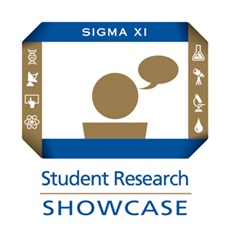 Enhanced In Vitro Biomineralization and Degradation of Magnesium Biodegradable Bone Implants from Laser Induced Manipulations
Enhanced In Vitro Biomineralization and Degradation of Magnesium Biodegradable Bone Implants from Laser Induced Manipulations
Jonathan Lu, Shepton High School
This research studies the impact of laser processing on the properties of magnesium alloys in a simulated body environment.
 The Inhibitory Effects of Resveratrol on Planktonic Growth and Biofilm Formation of Streptococcus Mutans
The Inhibitory Effects of Resveratrol on Planktonic Growth and Biofilm Formation of Streptococcus Mutans
Julia Barquin, American Heritage High School
The purpose of this experiment was to determine if resveratrol, a plant derived polyphenol found in many plants, shows inhibitory effects on the bacterial growth of streptococcus mutans.
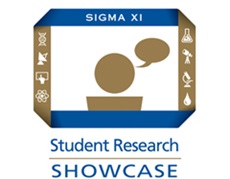 Site-Specific Genomic Integration of Large DNA Fragments
Site-Specific Genomic Integration of Large DNA Fragments
Kshitij Sacha and Yesh Doctor, Plano East Senior High School
Novel genome editing technologies have revolutionized our ability to probe and edit the genome at a single nucleotide resolution. Here, we engineered a novel PBase and Cas9 system that can preferentially integrate large fragments (>10 KB) to any user-specified location, combining the site-specificity of Cas9 with the integration capacity of PBase.
 Implementation of DPPH Assay to Rate Antioxidant Activity of Crude Fruit Extracts
Implementation of DPPH Assay to Rate Antioxidant Activity of Crude Fruit Extracts
Lance Rufino, University of Massachusetts Dartmouth
Neurodegenerative diseases such as Alzheimer’s, Parkinson’s, Huntington’s, as well as amyotrophic lateral sclerosis are diseases relative to the progressive loss of neurons over a host’s life span. As time progresses, proteins within the host have a propensity to fold incorrectly, specifically beta amyloids, synuclein, and Tau proteins. Mitochondrial dysfunction within the host is a symptom of the progressive loss of neurons due to oxidative stress. The mitochondria is unable to digest damaged organelles and macromolecules creating oxidative stress thus, causing neuronal dysfunction. One hypothesis of leading to neuronal dysfunction is through fibrillization of Tau proteins.
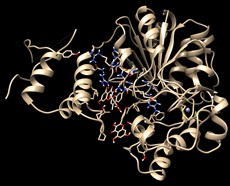 Small Molecule Affinities for Sirt-1 Deacetylase Enzyme
Small Molecule Affinities for Sirt-1 Deacetylase Enzyme
Martin Brenneman, Ohio Northern University
Analysis of cinnamon extract have determined that it contains a number of polyphenolic compounds and the antidiabetic effect of cinnamon is hypothesized to be due to those phenolic compounds. The protein target of those phenolic compounds has not been identified yet. However, Sirtuin-1 (Sirt-1), a deacetylase in the insulin signaling pathway, seems a likely target. To investigate this possibility, we docked resveratrol which is not in cinnamon extract, but it is a known activator of Sirt-1.
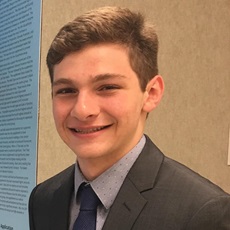 The Effects of Dietary Supplements on SKN-1 Activation in C. elegans
The Effects of Dietary Supplements on SKN-1 Activation in C. elegans
Nicholas DiStefano, American Heritage High School
This project studied the effects of dietary supplements that claim Nrf2 activation in humans on SKN-1 activation in C. elegans and how they were able to affect stress resistance, longevity, and enzyme and antioxidant levels.
 Optimizing Cellulase RS and Macerozyme R-10 ratios to Maximize Viable Protoplast Yield from Oryza sativa: Improving the Process of Creating Genetically Modified Plants
Optimizing Cellulase RS and Macerozyme R-10 ratios to Maximize Viable Protoplast Yield from Oryza sativa: Improving the Process of Creating Genetically Modified Plants
Nithya Kasarla, American Heritage High School
This project focused on optimizing the ratio of cellulase to macerozyme in an enzyme solution in order to maximize protoplast yield from rice, and improve the process of creating transgenic plants.
 Improving Nitration Activity of Fused TxtE-CYP102AI Reductase Domain by Optimizing the Linker Length
Improving Nitration Activity of Fused TxtE-CYP102AI Reductase Domain by Optimizing the Linker Length
Padmavathi Reddy, American Heritage High School
Cytochrome P450 monooxygenases have been targeted as industrial biocatalysts due to their versatility in catalyzing various oxidative reactions. This study aims to optimize the linker length of TxtEBM3R to improve the aromatic nitration of L-tryptophan.
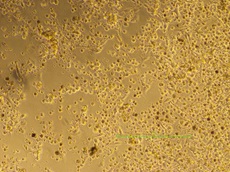 The Effect of Lycopene on SSM Cell Growth and Melanin Production
The Effect of Lycopene on SSM Cell Growth and Melanin Production
Satya Alagarsamy, American Heritage High School
Throughout the whole world, though, cancer kills approx. 7.9 million people every year, totaling in 20,000 deaths every single day. Through this experiment, the researcher is trying to find an inverse correlation between the carotenoid lycopene, cancer cell rate growth and melanin production, to help aid this epidemic. The researcher used four concentrations of lycopene: 0%, 18%,32%, and 85%. These were decided based on the relevance of lycopene in common foods everyday. 85% was chosen as a means to see if the cancer-fighting properties of lycopene ever plateau or stop altogether.
 Developing Diagnostic Tools for Alzheimer's Disease Using Iron Biomarker
Developing Diagnostic Tools for Alzheimer's Disease Using Iron Biomarker
Shayan Waseh, Thomas Jefferson University
We looked at the impact Alzheimer’s disease had on iron levels and biomarkers in the body, and we found a difference in those with Alzheimer’s disease compared to those without it. We may be able to use this phenomenon to diagnose Alzheimer’s disease decades earlier than we are able to now.
 Creating a Stable p62 Knockout Huntington's Disease Cell Line
Creating a Stable p62 Knockout Huntington's Disease Cell Line
Tristan Wille,Pine Crest High School
This research concerns an effort to knock out the p62 protein using RNA interference in a Huntington’s Disease cell line. By doing this, we seek to better understand the function of huntingtin protein in order to treat the disease in the future.
 The Effects of Granulocyte Colony-Stimulating Factor (GCSF) and Taurine in Combination on Ischemic Stroke
The Effects of Granulocyte Colony-Stimulating Factor (GCSF) and Taurine in Combination on Ischemic Stroke
Zachary Shevin, Pine Crest High School
Stroke is the third leading cause of death in the US, killing over 140,000 people annually. Though treatments for ischemia, the most common type of stroke caused by brain-cell oxygen deprivation due to cerebrovascular occlusion, exist, they can prove ineffective and in some cases evasive. Applying the concept of biological synergy, this research utilizes two drugs, Granulocyte colony-stimulating factor (GCSF) and Taurine, in sub-physiological doses in a PC-12 cell culture model and exposed these cells to hypoxic, stroke-simulating conditions, using a low oxygen chamber, in order to test how neuroprotective these drugs were, alone and in combination.